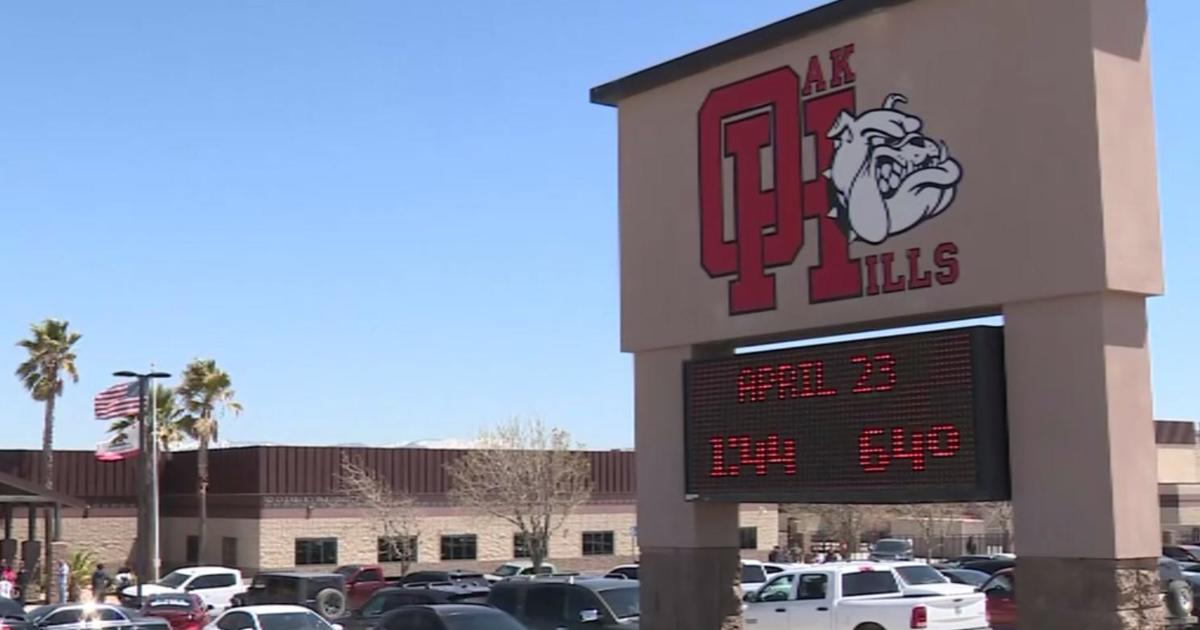Historic: SpaceX Launches Used Rocket And Used Spacecraft In Same ISS Mission
HAWTHORNE (CBSLA) – Hawthorne-based SpaceX launched an unprecedented mission Friday, deploying a previously used rocket and used spacecraft on an unmanned journey to bring 4,800 pounds of fresh supplies to the International Space Station.
After launching the recycled Dragon capsule at 7:36 a.m. Pacific time, SpaceX successfully brought its recycled Falcon 9 rocket down to the company's ground-based Landing Zone 1 at Cape Canaveral. The booster recovery was the 20th for the company.
At 7:48 a.m., SpaceX confirmed that the Dragon was in "good orbit." Company founder Elon Musk later posted on social media that the Dragon was "on its way to ISS."
The Dragon reaches the 250-mile high space station Sunday.
At SpaceX headquarters, cheers erupted outside the company's glassed-in Mission Control, where Musk joined his employees.
SpaceX launched its first ever recycled rocket in March of this year. In June, it launched and successfully recovered its first-ever recycled capsule.
The Dragon spacecraft being used in Friday's mission has been to the ISS once before, in a resupply mission flown in April 2015. The Falcon 9 rocket that boosted the spacecraft into orbit was used in a resupply mission in June of this year.
With the mission, their 17th launch of 2017, SpaceX achieves a historical milestone by simultaneously using a rocket and spacecraft that have both served in previous flights.
The launch was originally planned on Tuesday, but was first postponed until Wednesday, then until Friday morning.
"Taking additional time for the team to conduct full inspections and cleanings due to detection of particles in 2nd stage fuel system," the company announced via Twitter on Tuesday.
The capsule is hauling nearly 5,000 pounds of goods, including 40 mice for a muscle-wasting study, a first-of-its-kind impact sensor for measuring space debris as minuscule as a grain of sand and barley seeds for a germination experiment by Budweiser, already angling to serve the first beer on Mars.
It will be the 13th space-station resupply mission the company has flown under a contract with NASA that calls for SpaceX to make as many as 20 trips to the stellar outpost.
Ven Feng, a NASA manager, said he had "a little sense of deja vu" watching Friday's launch and landing of the same rocket he saw take off and return in June.
"Quite an achievement," he said.
For the past two years, SpaceX has been salvaging as much as possible from Falcon 9 rockets following liftoff. Rather than letting first-stage boosters sink in the Atlantic, as other orbital rocket makers do, SpaceX flies them back to Cape Canaveral for vertical touchdowns or, when extra rocket power is needed to propel a satellite extra high, to a floating ocean platform.
Reusability is the future for spaceflight, according to NASA's station program manager Kirk Shireman.
"The reality is, the business of space is dominated by launch costs ... so getting the costs down is important for everyone," Shireman said.
Jessica Jensen, a SpaceX manager, said the company aims to reuse rockets — and capsules — far more than twice. The only way to get thousands of people into space — the ultimate goal of Musk — is by drastically cutting launch costs, she said.
This was the first launch from the SpaceX-rented Complex 40 in more than a year. The last time a Falcon rocket stood at the pad ready to fly, in September 2016, it blew up during a fueling drill. SpaceX spent $50 million rebuilding the pad.
Friday's successful liftoff means SpaceX has now launched from all three of its pads — two in Florida and one in California — in the same year.
"This was a fantastic way to end the year for SpaceX East Coast launches," Jensen told reporters.
The space station is down to three astronauts until Sunday's launch of three more. The Dragon should arrive at the orbiting outpost a few hours after the fresh crew launches from Kazakhstan. Once back up to full capacity, the station will be home to three Americans, two Russians and one Japanese.
SpaceX has been making station supply runs since 2012.
(© Copyright 2017 CBS Broadcasting Inc. All Rights Reserved. The Associated Press contributed to this report.)



